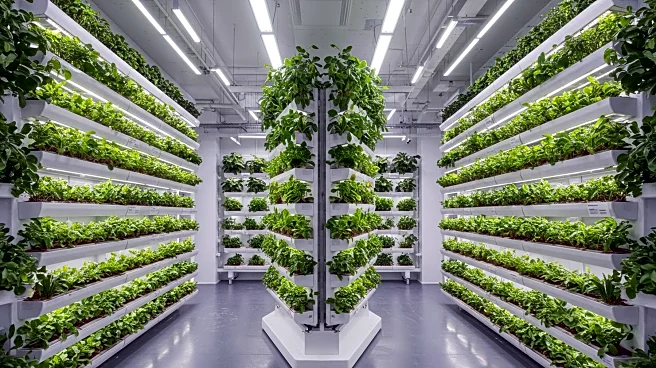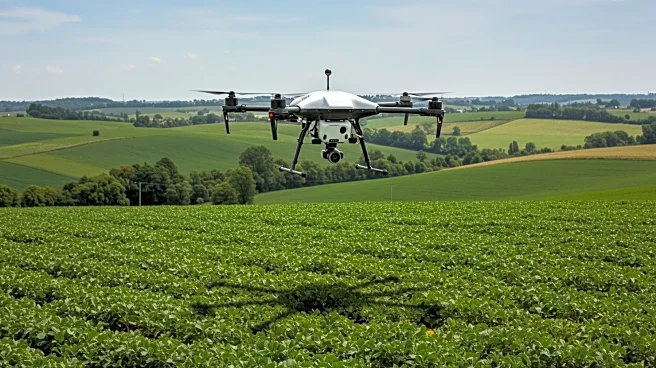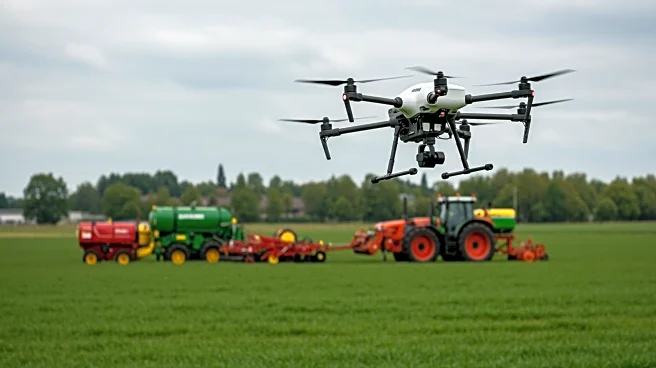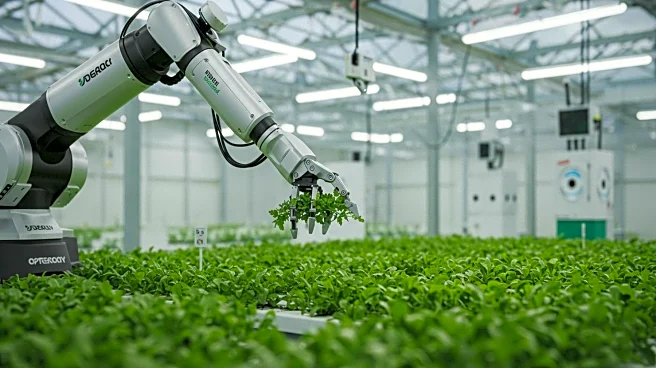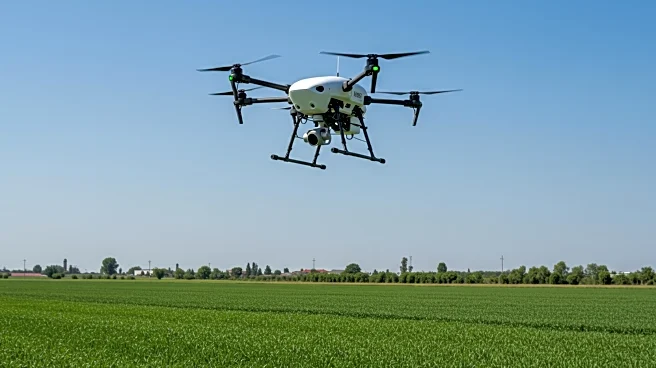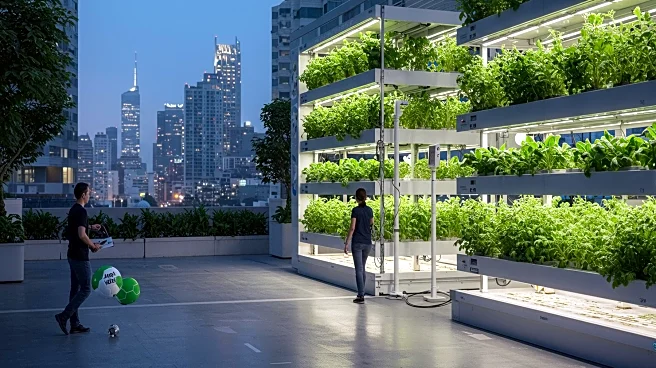Rapid Read • 8 min read
California's agricultural sector is undergoing a significant transformation with the adoption of vertical farming techniques projected to supply over 13% of the state's leafy greens by 2025. This shift is driven by the need to address challenges such as droughts, labor shortages, and the demand for sustainable practices. The state is leveraging advanced technologies, including AI-based advisories and satellite insights, to enhance productivity and resource management. California continues to lead the nation in diverse agricultural produce, with a focus on high-value exports and innovative farming methods. The integration of smart technology into farming practices is reshaping food security and sustainability in the state.
AD
The adoption of vertical farming in California is crucial for addressing environmental and resource challenges, particularly water scarcity and urbanization pressures. By reducing water usage by up to 95% compared to traditional methods, vertical farming offers a sustainable solution to the state's agricultural needs. This approach not only supports local food supply but also enhances export opportunities, contributing to global food security. The technological advancements in farming practices ensure California's continued leadership in the agricultural sector, providing economic benefits and supporting job creation. The focus on sustainability aligns with broader environmental goals and consumer demand for traceable and safe food.
As California continues to expand its vertical farming capabilities, the state is expected to see increased crop variety production and improved export opportunities. The integration of IoT sensors and AI-driven decision support systems will further optimize resource use and yield. Stakeholders, including farmers and agri-tech companies, are likely to invest in advanced management systems to address labor shortages and climate-related challenges. The ongoing innovation in pest management and resistant crop varieties will be crucial for securing yields and maintaining California's agricultural leadership. The state's commitment to sustainability and technological advancement will shape the future of its agricultural sector.
The shift towards vertical farming in California highlights broader ethical and environmental implications, such as reducing the carbon footprint of agriculture and promoting food security. The use of blockchain for supply chain transparency ensures authenticity and builds consumer trust. As climate change intensifies, the state's focus on resource management and sustainable practices sets a precedent for other regions facing similar challenges. The transformation of California's agriculture sector may influence national policies on food production and environmental stewardship, encouraging other states to adopt innovative farming techniques.
AD
More Stories You Might Enjoy
